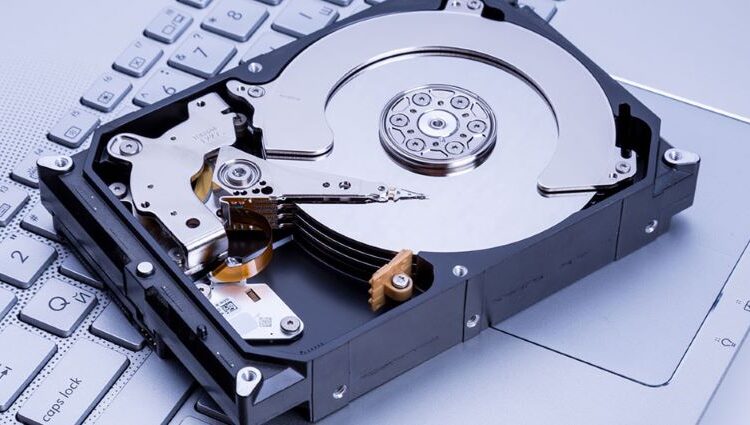How to Recover Deleted Files from NTFS Drive
What is NTFS?
Recovering deleted files from NTFS drive is possible in many cases if you know how to do that. First of all, as you probably know, NTFS stands for New Technology File System for Windows operating system which was introduced by Microsoft and it has been developed since then. The first version was introduced in 1993 and it was meant to work for Windows NT version 3.1.
There are some advantages and disadvantages to NTFS file system.
The pros of NTFS file system are:
- Keeping data on NTFS is usually safer and more secure than other common file systems like exFAT.
- Ability to define and set different permissions for different users. Limiting access to some users is easily possible in NTFS drives.
- Log file which is so handy in case of facing any hard disk failure or system error.
- Live compressions files and folders which allow users to access compressed files and folders on demand without any need of decompressing and extracting them into another location.
- Ability to make shadow copies or restore points to recover deleted files/folders fast.
The cons of NTFS file system are listed below:
- Not being compatible with most other operating systems like Android, Mac OS, digital devices like receivers, digital cameras and etc.
- Current NTFS versions work with Windows 2000 and later and you can not use them on Windows 98 and previous ones.
What Causes Deletion of NTFS-Formatted Drives?
There are various reasons for NTFS hard disk failures like installing a software that interrupts the healthy state of a drive. Viruses, physical damages, sudden cut off electricity power and etc. can also create problem. If an unauthorized user like hackers want to access an NTFS drive that has a $i30 string, it will create trouble for all partitions!
How to fix the NTFS File System Error?
There are some methods to fix an NTFS drive that faces issues. The most common easy-to-use method is using Windows built-in system check. To do so:
- Right click on the partition you want to fix and click on Properties.
- Go to the Tools tab
- On Error Checking section, click on Check
Windows automatically tries to find and solve the issues on that partition without any further attempt.
How to Recover Deleted Data of NTFS Partitions?
Recovering deleted files can not be done without use of third-party software for almost all users and you need to download and try recovering files with different software as in some cases if the problem isn’t straight-forward, recovering it is not easy and many software can not do that successfully and maybe you need to try a few of them.
List of the Software to use to recover deleted data on NTFS drives
1. MiniTool Power Data Recovery
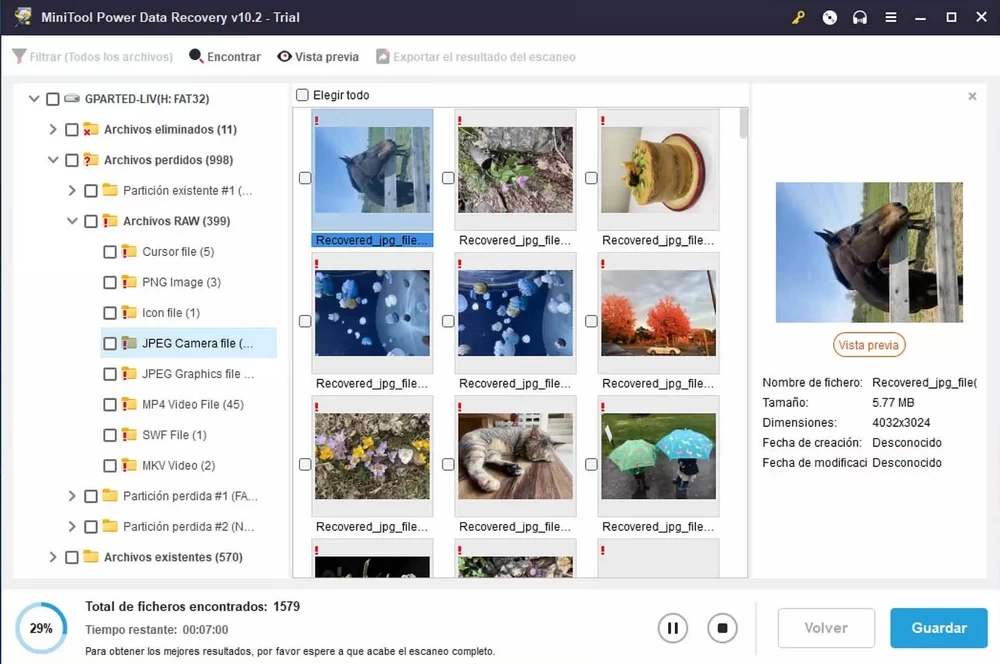
MiniTool Power Data Recovery is one of the best recovery tools. It can identify damaged memory cards or hard disks while no other operating systems can detect them.
It has an exceptional power in identifying and restoring deleted data from disks. It has both Windows and Mac OS versions.
MiniTool Power Data Recovery lets you recover data from laptop, HDD, SSD, USB drive, memory card and etc easily.
It happens sometimes that you empty the recycle bin and immediately you regret it but there’s nothing you can do about it. It is always recommended to have a shadow copy of your data in such cases because no other tool competes with shadow copy regarding this kind of issue but MiniTool Power Data Recovery helps you out in such cases too.
MiniTool Power Data Recovery helps you in case of being attacked by viruses or facing OS crashes and failures. You don’t need to run a full disk scan for recovering files. MiniTool can run the scanning and recovering operations in specific folders.
These files can be recovered well using MiniTool Power Data Recovery: DOC/DOCX, XLS/XLSX, PPT/PPTX, PDF, VSD, MPP, PUB,ODT, ODS, JPG/JPEG, TIFF/TIF, PNG, GIF, PSD, BMP, CRW, DCR, DNG, ARW, PSP, MP4, MP3, MKV, AVI, MPEG, FLV, RM/RMVB, MID/MIDI, WMA, WAV, OGG, ZIP, 7Z, RAR, CAB, JAR, PST, DBX, EMLX, HTM/HTML, TXT, XML, HLP, CHM, PZF, ICC, MHT, QPW, QXP, QPT, VEG, and etc.
2. R-Studio
R-Studio is a piece of software to recover deleted files/folders for various file systems including NTFS. It uses the latest technologies and methods to recover data and can be used in different operating systems like Windows , Mac OS and Linux.
R-Studio is capable of recovering data from damaged hard disks as well as local network computers. The main features of R-Studio are:
- Easy to use in a friendly environment which is similar to Windows explorer.
- Recovering data from damaged hard disks in different Windows , Mac OS and Linux based networks.
- Hexadecimal editor for viewing or editing information of located files in the NTFS drive
- Supporting of wide range of file systems as: FAT12, FAT16, FAT32,NTFS, NTFS5, HFS/HFS+ (Macintosh), Little and Big Endian variants of UFS1/UFS2 (FreeBSD/OpenBSD/NetBSD/Solaris) and Ext2FS/Ext3FS.
- Ability to create image backup of partitions of hard disks and compressing them to occupy less disk space or splitting them to your desired size.
- Possibility to recover files that are being deleted during operations like FDISK or other tasks done by other partition managing tools.
- Recovering files/folders that are affected and deleted by viruses
When you want to recover data using R-Studio you will the possibility to:
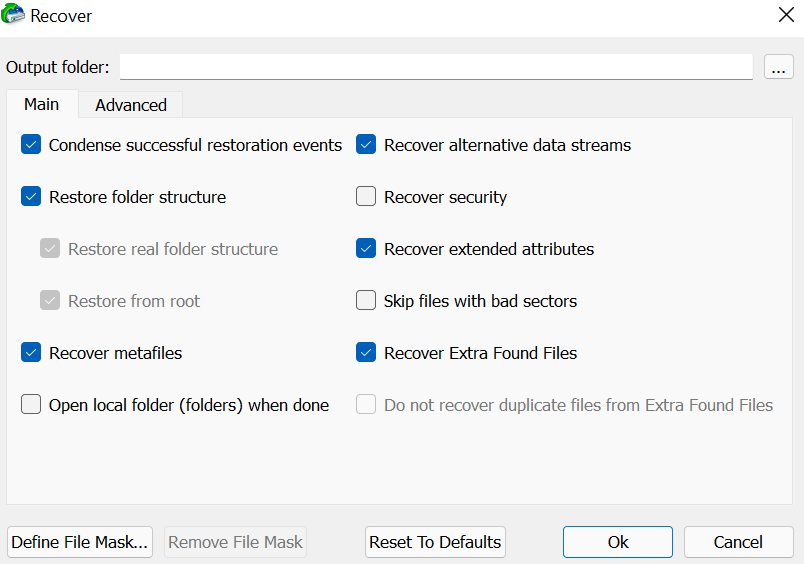
- Condense successful restoration events
- Restore folder structures.
- Recover metafiles
- Recover alternative data streams
- Recover security
- Recover extended attributes
- Skip files with bad sectors
3. Disk Drill
Disk Drill is a professional disk recovery tool that enables you to restore deleted data from NTFs and many other file system drives. It can help you if you accidentally removed data or your hard disk facing issues.
Disk Drill has the ability to recover your deleted files with an acceptable rate with no need to wait for hours for the operation to be completed. It finds deleted files by running a deep scan through your hard disk and it supports both internal and external hard disks.
The main features of Disk Drill are as below:
- Possibility to recover files with two quick and deep scans.
- Recover deleted data from SD cards.
- Restore iPod classic data
- Various file systems like HFS/HFS+, FAT, NTFS are supported.
- Pause and Resume options are selectable during both quick and deep scans.
4. Disk Digger
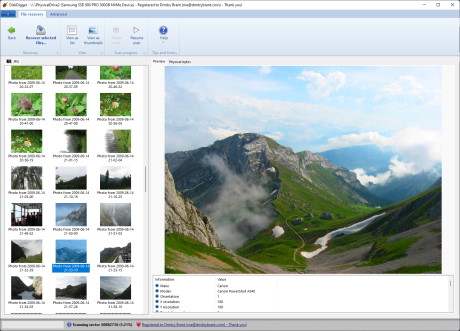
DiskDigger is another recovery tool that can restore removed files from different sources. You just need to plug in an external disk or a memory card to your computer and DiskDigger helps you restore various data formats like: photos, videos, documents and etc.
DiskDigger is able to recover data from hard disks that are partially deleted or even totally deleted and Windows can not identify them. Hard disks that have bad sectors are also recoverable using this tool.
5. Magic Partition Recovery
Magic Partition Recovery Software helps you recover deleted partitions or deleted data from your drivers in FAT or NTFS format and repair and optimize damaged or defective hard drives or partitions.
To recover data by Magic Partition Recovery you do not need to be an expert. The simple software environment and the step-by-step steps provided by the software will help you to recover data very quickly and easily.
Magic Partition Recovery scans your hard drive in 2 quick and complete ways and will show you the files that can be recovered for selection to recover.
Magic Partition Recovery supports more than 200 file formats for recovery; even it has the ability to restore files that you have permanently deleted.
Magic Partition Recovery is able to recover music files, photos, executables, documents, databases, zip files, and etc. The software’s advanced search tool allows you to search for the desired file name and sort the result by date, name and volume.
6. Auslogics File Recovery
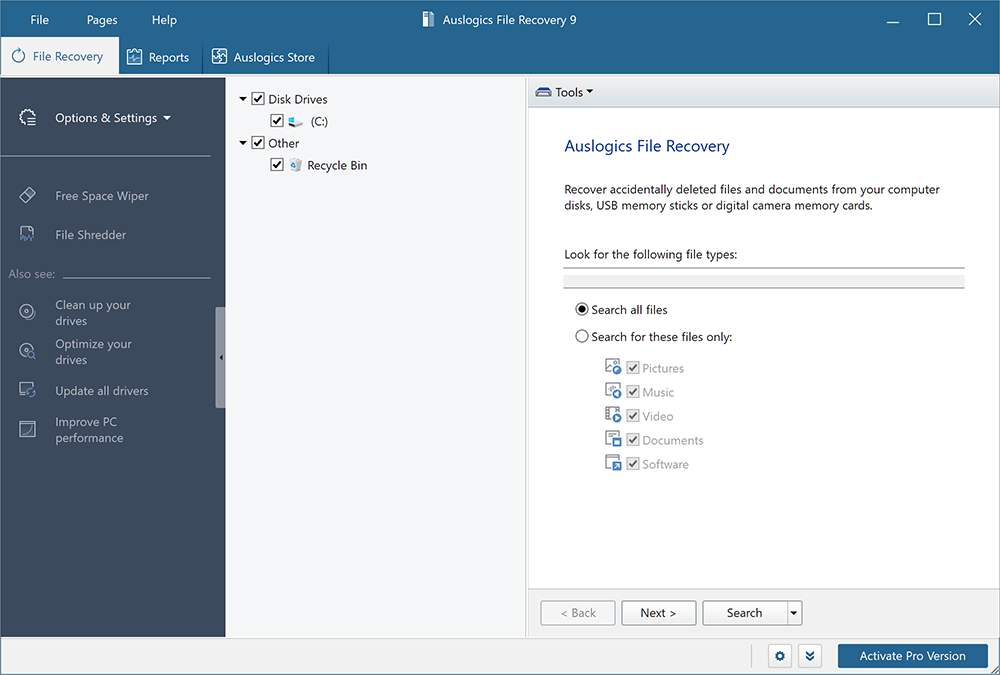
Auslogics File Recovery is another tool that can be used to restore removed data from damaged disks. You are able to recover different types of file formats using Auslogics File Recovery like Music, photos, media files and etc.
If your data is being infected by viruses and spyware to recover them you can consider Auslogics File Recovery as an option. In some cases users delete files unintentionally from their computer or other digital devices like cameras and Sd cards; this tool is a great help in these cases too.
You will have the option of previewing files when trying to recover them using this tool. The main features are:
- Ability to restore unintentional files from hard disk drives and even deleted partitions
- Delete confidential files
- Showing the success of recovered files
7. SystemRescueCd
SystemRescueCd is a Linux-based data recovery software that can be used as bootable CDs, DVDs or USBs. SystemRescueCd software is designed to enable users to edit hard disk partitions.
SystemRescueCd software has a complete set of system tools and basic tools as below:
- GNU Parted is the best tool for editing disk partitions under Linux.
- GParted is a tool for replicating Linux partitions.
- Partimage is a tool for copying the Linux Drive / Ghost image.
- Reinstlaa is one of the most commonly used bootloaders in Linux.
- The system file tools of this software allow you to format, resize and debug a partition on the hard disk.
- These tools include e2fsprogs, reiserfsprogs, reiser4progs, xfsprogs, jfsutils, ntfsprogs, and dosfstools.
- sfdisk is a tool for backing up and restoring partition tables.
- Test-Disk tool can recover lost partitions and / or non-bootable disks, bootable disks and support Reiserfs, NTFS, FAT32, EXT2 / 3 and many other file systems.
- Rsnamshot is an efficient tool for instant display of filesystems to make backups of remote and local systems.
- EVMS or volume management system is a powerful tool for managing logical volumes.
- NTFS-3G is for calling NTFS partitions under Linux with support for reading and writing data.
- Floppy disk images (FreeDos, MemTest +, Gag, Ranish Partition Manager, Aida).
- Supports EXT2, EXT3, EXT4, Reiserfs, Reiser4, BTRFS, XFS, JFS, VFAT, NTFS, ISO9660 file systems.
- Support for network file systems including Samba and NFS.
- Build, edit, copy and restore hard disk partitions.

